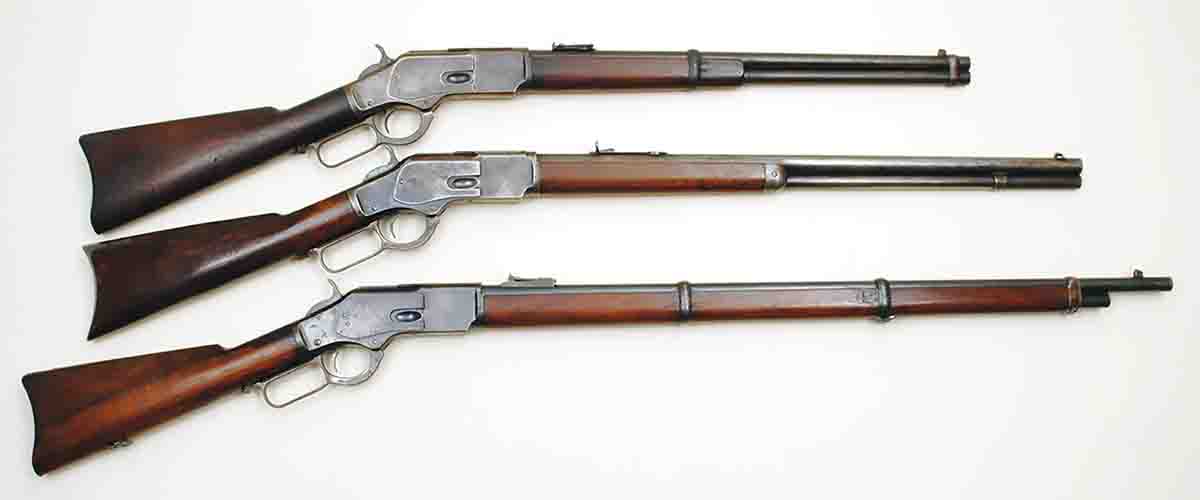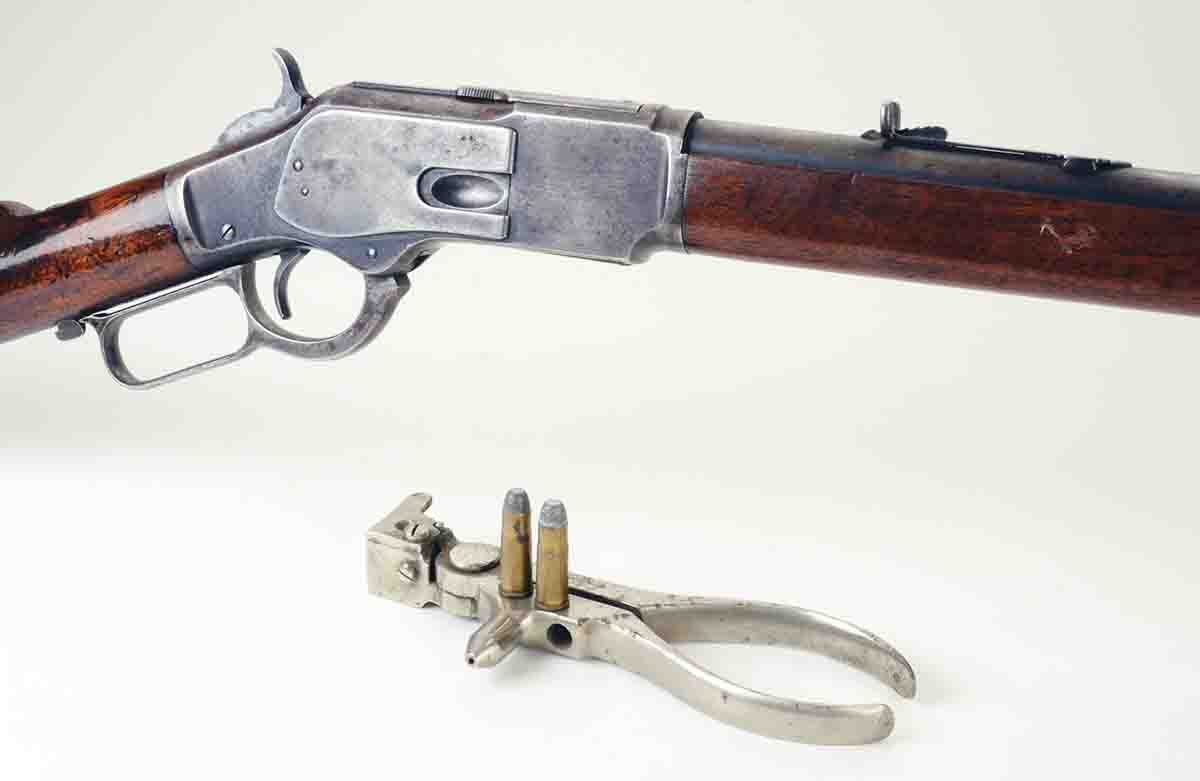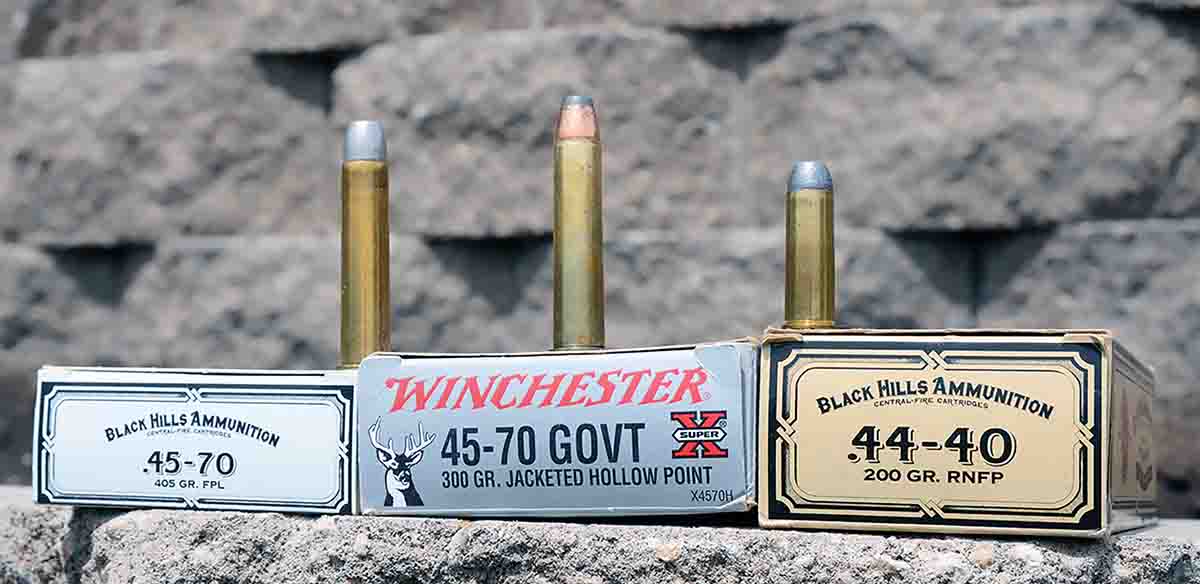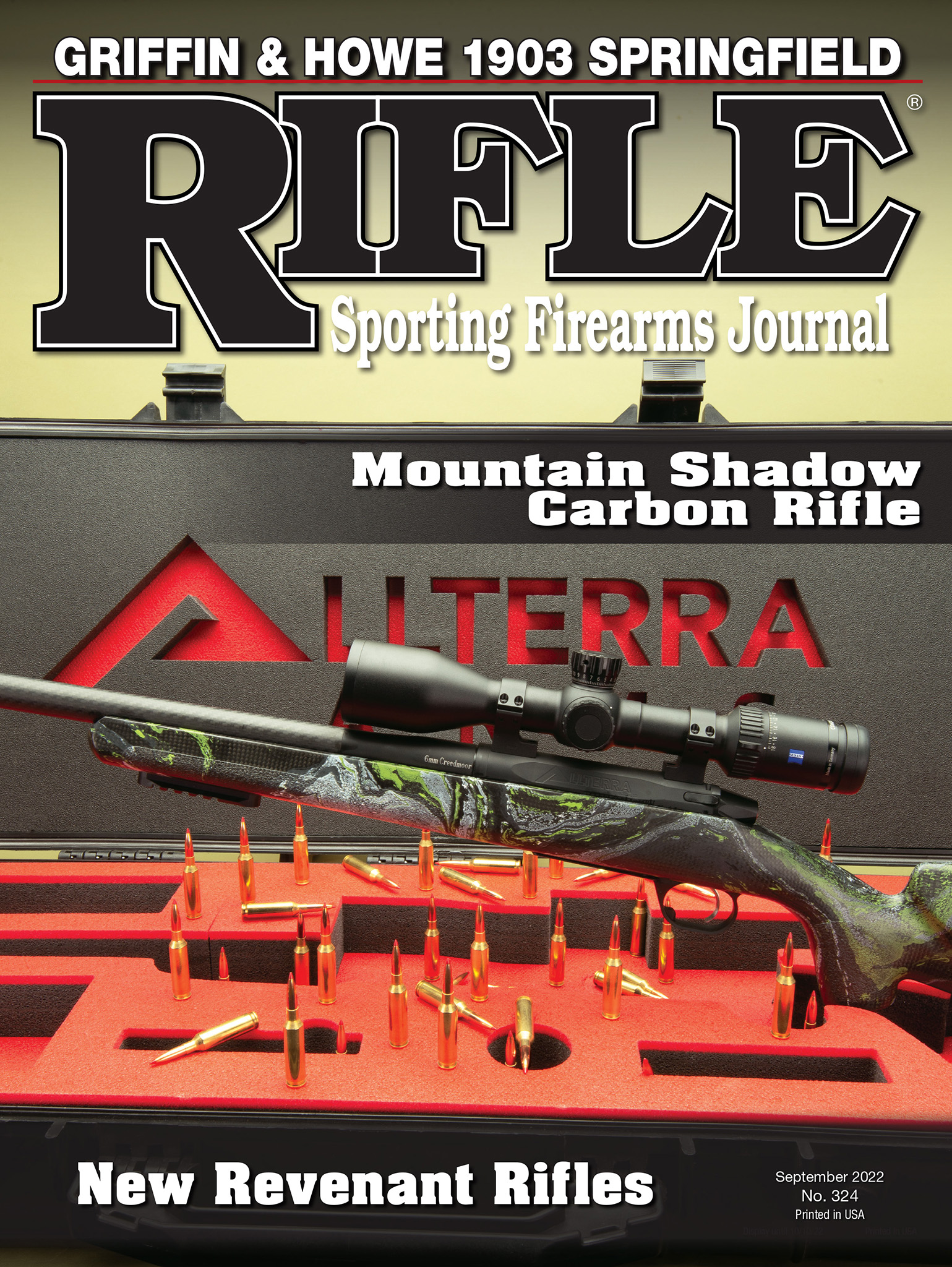Down Range
150th Anniversary
column By: Mike Venturino - Photos by Yvonne Venturino | September, 22

Winchester’s ’73 was a first in several respects. One: it was the company’s first firearm with a ferrous receiver – initially iron, but eventually steel. Two: it chambered its first centerfire cartridge – .44 WCF. With brass cartridge cases, the .44 WCF was also Winchester’s first reloadable cartridge. The Model 1873 Springfield was nowhere near a first. Its pivoting breechblock function quickly gained it the nickname of “Trapdoor.” First used in 1865 with a .58 cartridge, the caliber was reduced to .50 for the Models 1866, 1868 and 1870, and the basic design was carried on to the Model 1873s with a further reduction in caliber. Production of .45 caliber “Trapdoor” Springfields continued into early 1893.

Original Springfield “trapdoors” are still so common that affordable ones safe for shooting are available from internet websites and antique-oriented guns shows. According to the book Trapdoor Springfields by M.D. Waite and B.D. Ernst, the government’s Springfield Armory produced 484,529 rifles and 59,909 carbines along with an array of specialized and experimental models. Standard barrel lengths were 325⁄8 inches for infantry rifles and 22 inches for carbines.

Furthermore, good quality replicas of both Model 1873 Springfields and Model 1873 Winchesters can be found on dealer’s rifle racks. Factories in both Italy (Uberti) and Japan (Miroku) have come to the aid of twenty-first-century levergun fans with very fine replicas of Model 1873 Winchesters. Both nations’ factories are producing ’73 rifles and carbines but Uberti has even tackled making ’73 muskets.
For those who would desire new replicas of Springfield trapdoors, good ones have been sporadically available for more than 50 years. For instance, in 1972, I bought my very first .45-70, a Harrington & Richardson (H&R) facsimile of the Trapdoor cavalry carbine. That H&R carbine was a nicely finished and fine-shooting replica, which was sold only because I landed a nice original Model 1873 Trapdoor carbine. H&R also produced a small quantity of Trapdoor infantry rifles. The exact number is unknown, but let me state its rarity this way – I’ve never seen one. H&R Trapdoor .45-70s were discontinued in the 1980s, but Pedersoli of Italy still makes them in both rifle and carbine form. I have owned several and found them to be well-crafted replicas.

Shortly into military service, cavalrymen began complaining about the 70-grain load’s recoil in their 7-pound carbines. Therefore, the government’s Frankford Arsenal developed a special carbine load. It held 55 grains of black powder in the same 2.10-inch case with the extra space filled with fiber wads or even hollow cardboard tubes. In the 1980s and 1990s, some fired cases dug up by archaeologists at the Little Big Horn Battlefield still contained the cardboard tubes after being in the ground since 1876. The .45-55 load was rated at having 1,150 fps velocity. The famed “heavy” .45-70 loading with 500-grain RN bullet and 70 grains of powder didn’t arrive until 1881, as did brass cartridge cases. At the 1873 introduction, cartridge cases were copper with inside primers, making reloading impossible. With brass cases and exposed primer pockets, reloading did become feasible and the U.S. Army issued kits of reloading tools including bullet moulds.
Personally speaking, I’ve been a .45-70 handloader for 50 years. At the height of my BPCR Silhouette participation, I was burning up a 25-pound case of black powder every shooting season. Speaking literally, I’ve shot away tons of cast .45-70 bullets. Often, I’ve been flabbergasted at the level of precision delivered by a 150-year old cartridge with black powder and cast bullets when fired in competition grade single-shot rifles. My standard for .45-70 competition loads were groups of 1½ MOA for 10 shots at 300 yards.
The shooting of modern .45-70 leverguns has amazed me in a different manner. They can be loaded to higher pressure levels with smokeless powders, as shown in Lyman’s Reloading Manuals’ special .45-70 sections. The recoil of such loads in Model 1886 leverguns with crescent buttplates has given me astounding bruises!
My handloading of .44-40 started 40 years ago. Not as many rounds have been loaded as with .45-70, but the count still is in the tens of thousands. These have been fired in original and reproduction Winchester Model 1873s and Model 1892s, Colt Lightnings, Marlin Model 1894s and dozens of different revolvers. Whereas I seldom load black powder .44-40s since retiring from cowboy action completion, Trail Boss is my go-to smokeless powder for safe .44-40s loads in 100-plus year-old rifles.
My rifle racks still hold late nineteenth-century Trapdoor Springfield Model 1873s in rifle and carbine form and carbine, rifle and musket Winchester Model 1873 .44-40s. They have all proven to be fine shooters when fed carefully prepared ammunition.
.jpg)


